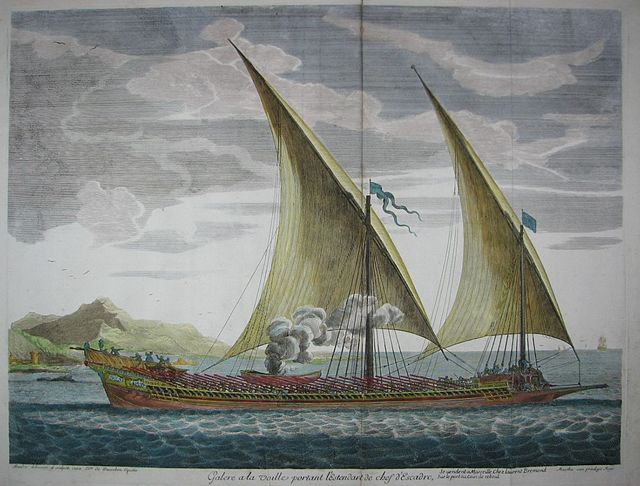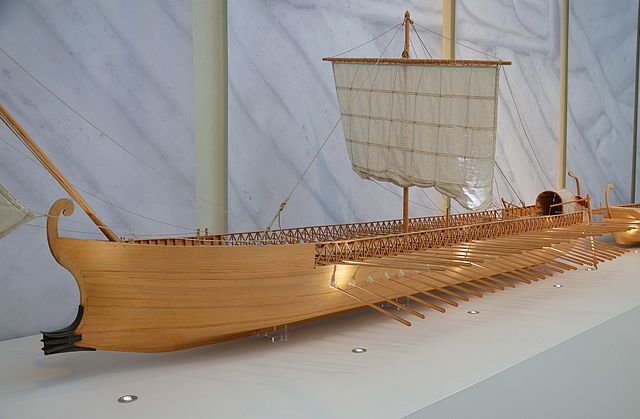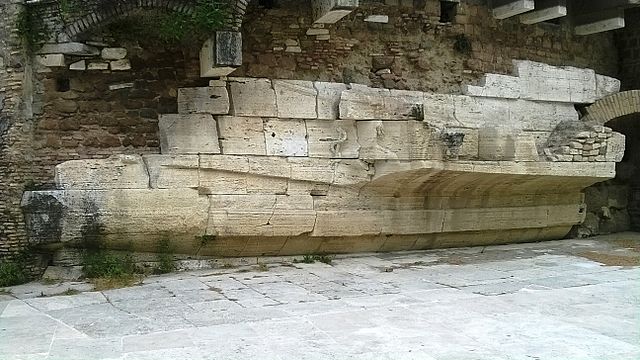From the 4th century BC on, new types of oared warships appeared in the Mediterranean Sea, superseding the trireme and transforming naval warfare. Ships became increasingly large and heavy, including some of the largest wooden ships hitherto constructed. These developments were spearheaded in the Hellenistic Near East, but also to a large extent shared by the naval powers of the Western Mediterranean, specifically Carthage and the Roman Republic. While the wealthy successor kingdoms in the East built huge warships ("polyremes"), Carthage and Rome, in the intense naval antagonism during the Punic Wars, relied mostly on medium-sized vessels. At the same time, smaller naval powers employed an array of small and fast craft, which were also used by the ubiquitous pirates. Following the establishment of complete Roman hegemony in the Mediterranean after the Battle of Actium, the nascent Roman Empire faced no major naval threats. In the 1st century AD, the larger warships were retained only as flagships and were gradually supplanted by the light liburnians until, by Late Antiquity, the knowledge of their construction had been lost.

The famous 2nd century BC Nike of Samothrace, standing atop the prow of an oared warship, most probably a trihemiolia.
The Lenormant Relief, from the Athenian Acropolis, depicting the rowers of an "aphract" Athenian trireme, c. 410 BC. Found in 1852, it is one of the main pictorial testaments to the layout of the trireme.
1-10 model reconstruction of a quadrireme based on a graffito from Alba Fucens in Italy, mid-1st century AD, Museum für Antike Schiffahrt, Mainz (34305899133)
The Isola Tiberina prow in Rome. according to Coates, it depicts a Greek-type "five" or "six", while according to Murray, it is a "five".
A galley was a type of ship which relied mostly on oars for propulsion that was used for warfare, trade, and piracy mostly in the seas surrounding Europe. It developed in the Mediterranean world during antiquity and continued to exist in various forms until the early 19th century. It typically had a long, slender hull, shallow draft, and often a low freeboard. Most types of galleys also had sails that could be used in favourable winds, but they relied primarily on oars to move independently of winds and currents. The term "galley" originated from a Greek term for a small type of galley and came in use in English from about 1300. It has occasionally been used for unrelated vessels with similar military functions as galley but which were not Mediterranean in origin, such as medieval Scandinavian longships, 16th-century Acehnese ghalis and 18th-century North American gunboats.

Colourised engraving of a French galley (27 pairs of oars) built according to the design that was standard in the Mediterranean from the early 17th century; Henri Sbonski de Passebon, 1690
United States ships at the Battle of Valcour Island depicting several "row galleys" similar in function but based on very different designs from Mediterranean galleys; watercolor by Charles Randle
Drawing of warships (pointed bows) and trade ships (rounded bows); based on a wall relief from the Southwest Palace at Nineveh, circa 700 BC.
Two compact liburnians used by the Romans in the campaigns against the Dacians in the early 2nd century AD; relief from Trajan's Column, c. 113 AD








